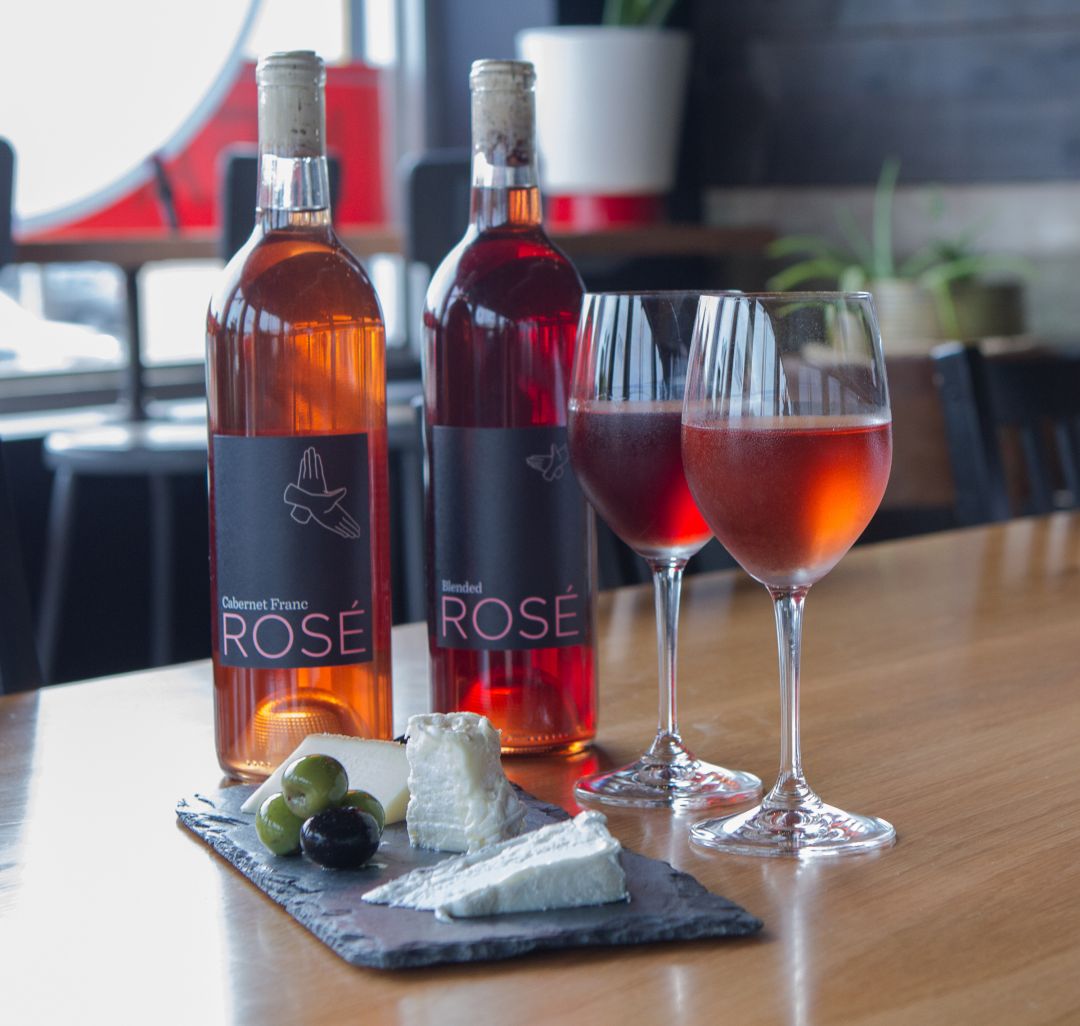Pretty with Pink
The art of pairing rosé with a variety of cheeses
Over the last few years, rosé has grown wildly popular. Pink is the new black and is popping up in glasses near and far with the celebratory hashtag #yeswayrosé for those sipping while on social media.

Rosé rose risen from the ashes, Phoenix-like, transformed from the syrupy-sweet grandma wine of the ’90s into a more balanced, refined and complex creature. Americans are now drinking drier rosés, with the U.S. trailing only France in consumption of the pink stuff.
In fact, this country is the third largest producer of blush — though production is actually declining with the diminishing taste for White Zin, the sweet pink commodity wine that remains the bulk of rosé production here.
When we consider wine and cheese pairing, most often our attention drifts to red or white, but pink offers some distinct advantages, representing the best of both worlds — the light brightness of a white with the depth and complex variations of red — to the table.
Not much has been written about pairing cheese and rosé, likely because there is so much variability in the glass depending on the varietal, blend and winemaking style, so the rendering of broad-stroke pairings is of limited value.
Still, as the lighter, brighter and warmer months approach, a racy and thirst-quenching rosé is what I want in my glass. And, of course, cheese is always in my fridge, so it’s time to think pink pairings.
Tasting my way through a number of Oregon selections, a classic from Provence, the homeland of rosé, and some value bottles, I chose a small sample of cheeses — from soft and ripened, to aged and blue.
Each cheese matched well with one or more of the wines, yet the most challenging to pair, by far, was the blue. The bold flavors of blue needed a sweet contrast not present in most of the wines tasted.
For similar reasons, the washed rind struggled to find a footing. This is not to say there aren’t great possible combinations, but there are too many competing variables to validate consistently great recommendations.
Now, for the winners.
In general, ripened goat cheese played perfectly with a wide spectrum of rosés, from single varietal to blends. Sporting an edible, wrinkly rind that envelops a pure white interior paste, this type of cheese may be slightly oozy just beneath the rind, depending on its age.
More specifically, La Tur, an Italian cheese made with mixed cow, sheep and goat milk, offers a velvety, rich texture and mild, almost sweet flavor wrapped in a delicate, edible rind that adds even more texture and additional alluring flavors. The rosé complimented the cheese’s obvious complexity.
Hard aged selections paired well, too, provided the cheese was not too heavy on salt or acid notes. An extra-aged Comté made a refined partner with many of the wines.
The easiest match — satisfying with a wide range of rosés — was the readily available P’tit Basque, a small drum of sheep’s milk cheese from the Basque region bordering France and Spain. Its savory, salty, rich notes paired perfectly with pinks across a spectrum of flavor profiles.
Overall, the wines with a touch of sweetness were most compatible. A bright acidity with depth and complexity in the finish were helpful, too, but not so much that it masked the nuances of the cheese. In a number of instances, slight effervescence was a pleasant addition to the mix.
As you savor rosé this summer, be assured there is a wide array of cultured creations that can round out your tasting experience. When it’s too warm to cook, a cheese and wine night may just be in order.










